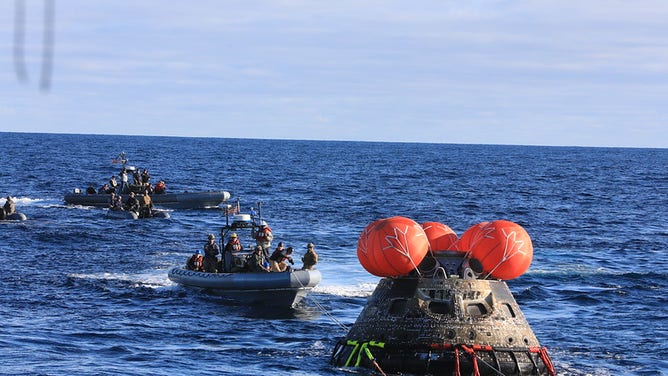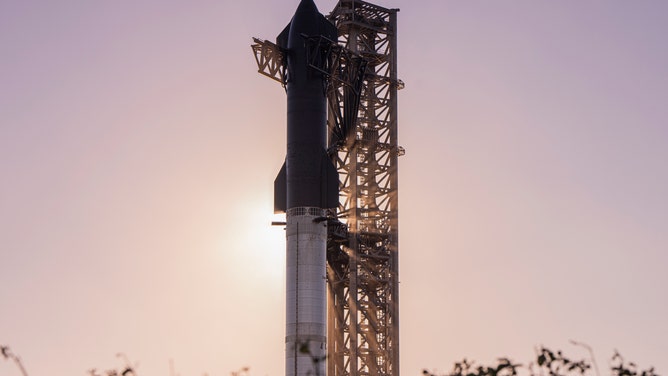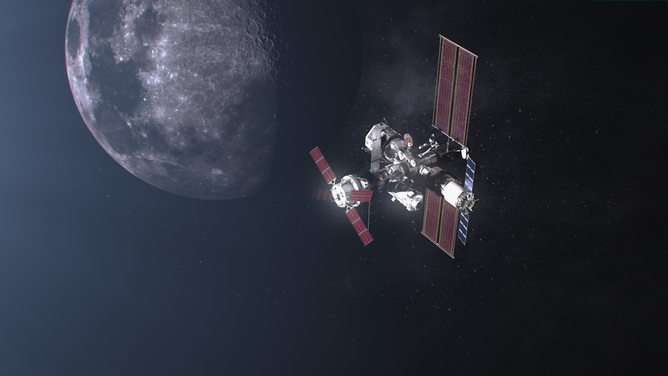NASA delays Artemis astronaut launches to the Moon
NASA officials say the decision to delay the Artemis II and Artemis III astronaut missions to the Moon was the result of lessons learned from the Artemis I test flight and to allow more time for the testing of SpaceX's Starship and Axiom Space's lunar spacesuits.
Watch Orion's breathtaking final journey around the moon before heading back to Earth
After Orion completed its final lunar flyby, the spacecraft fired up its engines to set it on course for its return journey back to Earth.
NASA will delay the first human Moon landing to late 2026 to allow time for more safety measures, space agency officials announced Tuesday.
NASA Administrator Bill Nelson said that the shift in the Artemis II mission with four astronauts to lunar orbit will shift to September 2025. Artemis III, the first human Moon landing mission since Apollo 17, could happen in September 2026. The Artemis IV mission remains targeted for September 2028.
The decision to delay the astronaut missions to the Moon resulted from lessons learned from the first test launch of NASA’s Space Launch System and Orion spacecraft, known as Artemis I, nearly one year ago in 2022. A crewless Orion spacecraft traveled around the Moon and back to Earth, testing NASA’s Artemis launch system from end to end.
REPORT FINDS ARTEMIS III MOON LANDING LIKELY YEARS BEHIND SCHEDULE
"We are doing something incredibly different. In the process of all this, as we remind everybody at every turn, safety is our top priority," Nelson said. "And to give Artemis teams more time to work through the challenges with first-time developments, operations and integration, you're going to get more time on Artemis II and III."
Over the past year, reviewing data and flight hardware from the Artemis I test mission led to further safety checks before the space agency is ready to launch an astronaut crew, NASA management said.

NASA’s Orion spacecraft for the Artemis I mission was successfully recovered inside the well deck of the USS Portland on Dec. 11, 2022 off the coast of Baja California. After launching atop the Space Launch System rocket on Nov. 16, 2022 from the agency’s Kennedy Space Center in Florida, Orion spent 25.5 days in space before returning to Earth, completing the Artemis I mission. (Image: NASA)
(NASA)
During Orion's re-entry to Earth's atmosphere, the spacecraft's heat shield experienced 5,000 degrees Fahrenheit, temperatures about half as hot as the outer surface of the Sun.
Orion used a "skip entry" method when the spacecraft dipped into the upper part of Earth’s atmosphere and then jumped back out like a stone skipping on water before the final descent. NASA engineers found that some of the char on the heat shield came off, which was unexpected.
NASA’S ORION SPLASHES DOWN AFTER HISTORIC MOON MISSION, PAVING WAY FOR ASTRONAUT MISSIONS
"This heat shield is an ablated material. It is supposed to char, but what we were not expecting were some pieces of that char to be liberated from the vehicle, said Deputy Associate Administrator of NASA’s Moon to Mars program Amit Kshatriya, adding the team has spent "the bulk of 2023" understanding the issue.
More time for human lunar lander, Moon spacesuit development
Despite the work ahead to get to the Artemis II launch, which is a lunar orbiting flight, not a Moon landing, NASA officials said they would still need to delay the Artemis III Moon landing to allow more time for their commercial partners.

SpaceX Starship and Super Heavy booster stacked for liftoff in Boca Chica, Texas ahead of a second test flight. (Image: SpaceX)
NASA is counting on international and commercial partners currently working to develop the human landing system, spacesuits and an orbiting lunar outpost known as Gateway, all of which must be completed before an astronaut Moon landing.
SpaceX has been testing its Starship spaceship, which will serve as the Artemis III human landing system. Blue Origin was awarded a contract for subsequent human Moon landings.
"With the suits and with the lander, that's a huge conglomeration of different development activities that have to meet together. And not any single one of them is more important than the other," said Kshatriya. "We need them all to be ready and all to be successful. In order for that very complicated mission to come together."
Kshatriya said this new schedule for Artemis III will allow SpaceX more time to develop Starship and Axiom Space to develop the lunar spacesuits.
Jessica Jensen, SpaceX's vice president of customer operations and integration, said the company is targeting February for a third test flight of Starship from Boca Chica, Texas, pending launch license approval from the Federal Aviation Administration.
SpaceX also plans to conduct a test landing on the Moon in 2025 with Starship before flying astronauts on Artemis III.

Artist rendering of NASA's Lunar Gateway in orbit around the moon. (Credit: NASA/Alberto Bertolin)
The first Gateway module built by the European Space Agency will launch during Artemis IV. NASA recently announced the United Arab Emirates will provide the airlock for the core components of Gateway. The Gateway space station will be completed during the 5th and 6th Artemis missions, according to Kshatriya.
FIRST VULCAN ROCKET LAUNCH SENDS AMERICAN MOON LANDER ON JOURNEY TO LUNAR SURFACE
NASA’s latest delay with the Artemis program comes a day after the first launch of the agency’s Commercial Lunar Payload Services (CLPS) program. The initiative is part of the Artemis program and is designed to send robotic lunar missions to prepare for the return of humans to the Moon.
A private Moon lander by Pittsburgh-based Astrobotic carrying NASA science launched from Cape Canaveral on Monday. While the launch was successful, the Peregrine lander and spacecraft suffered damage to its propulsion system, and Astrobotic announced on Tuesday that Peregrine wouldn’t make it to the lunar surface.
